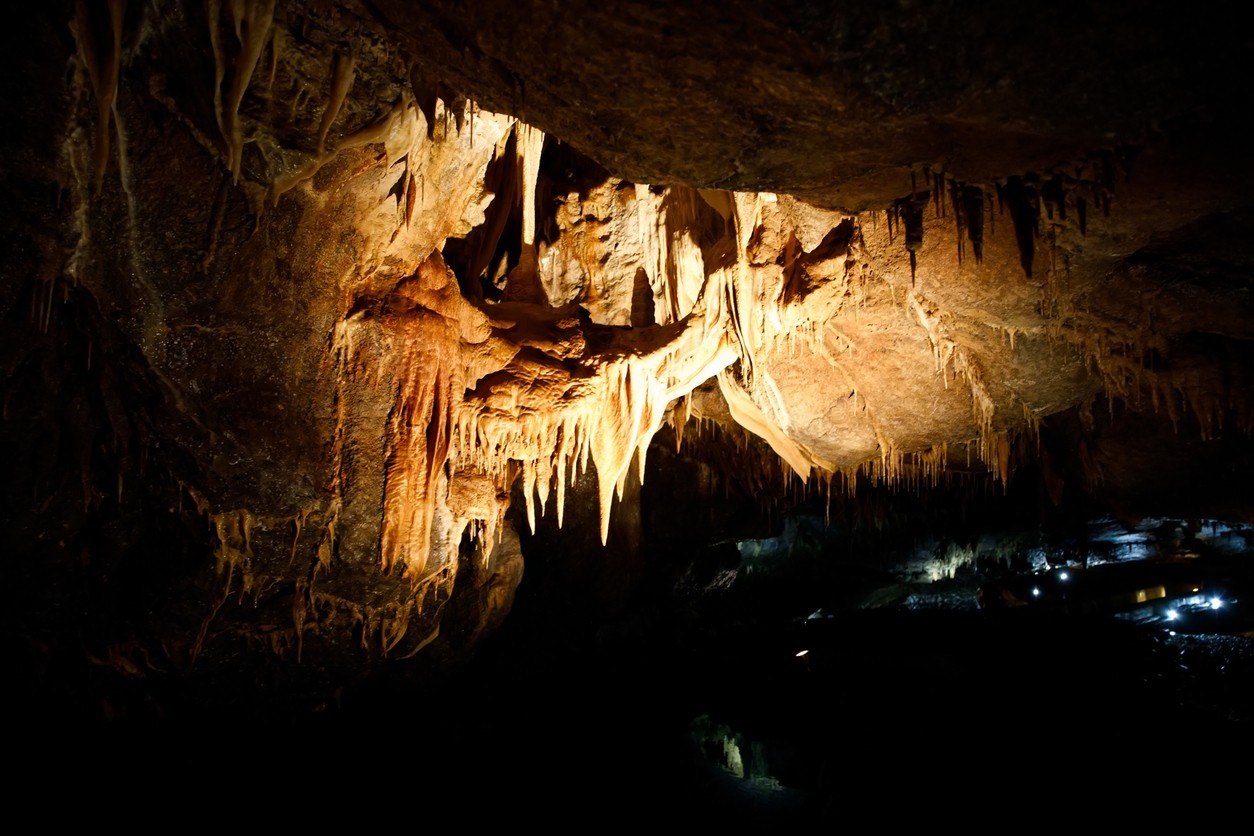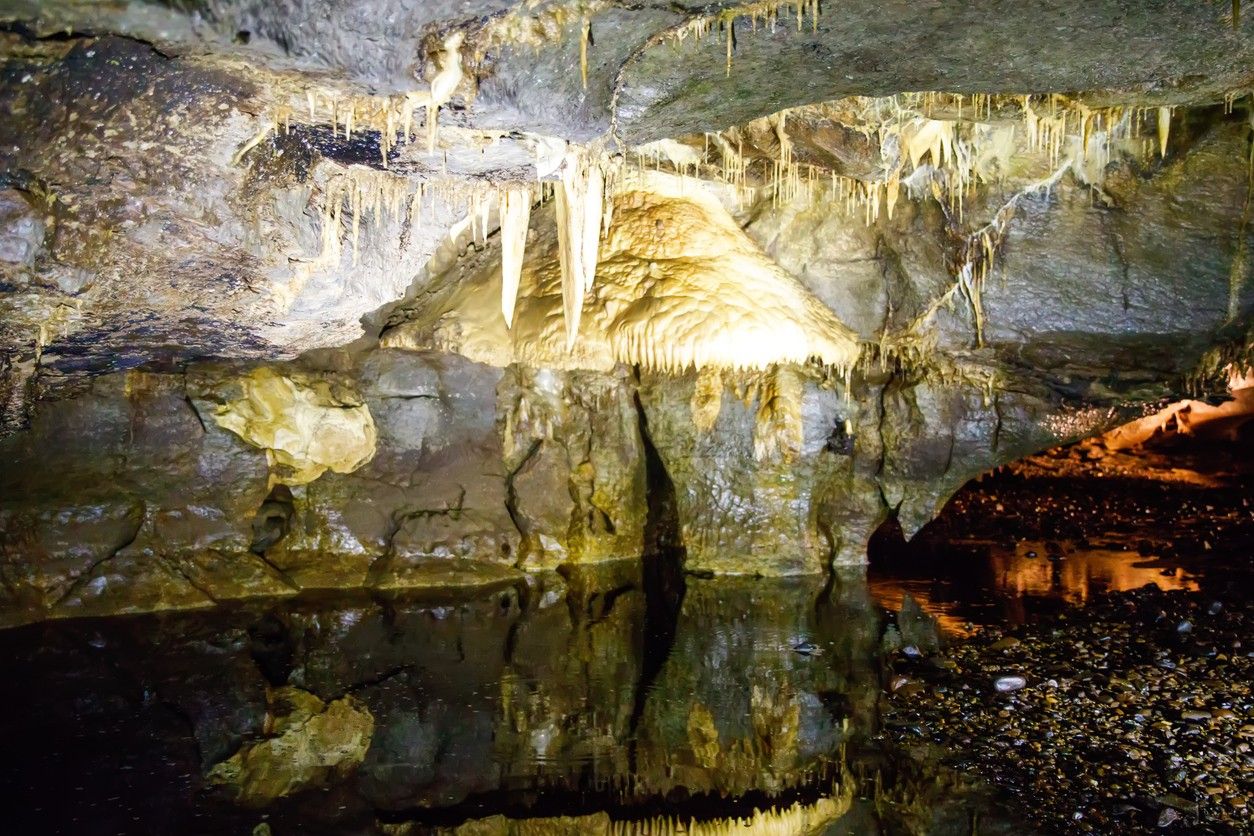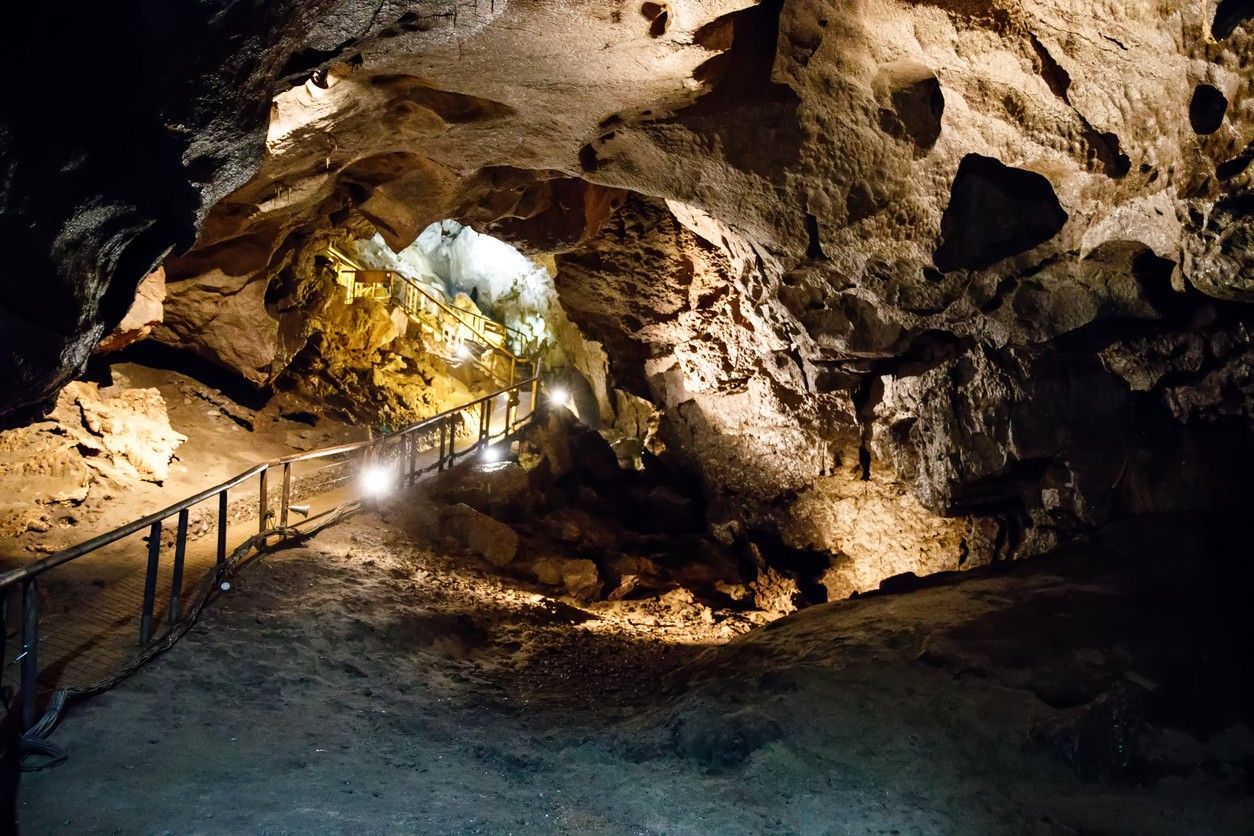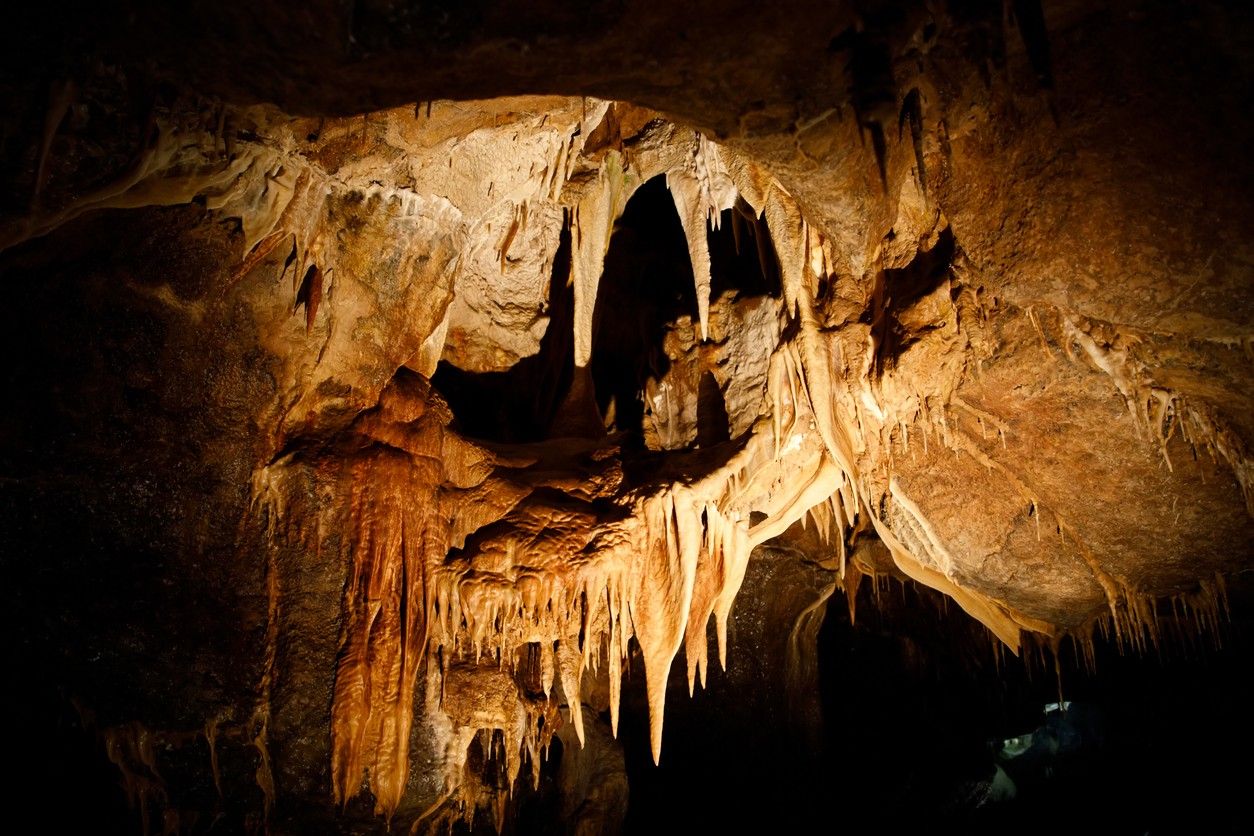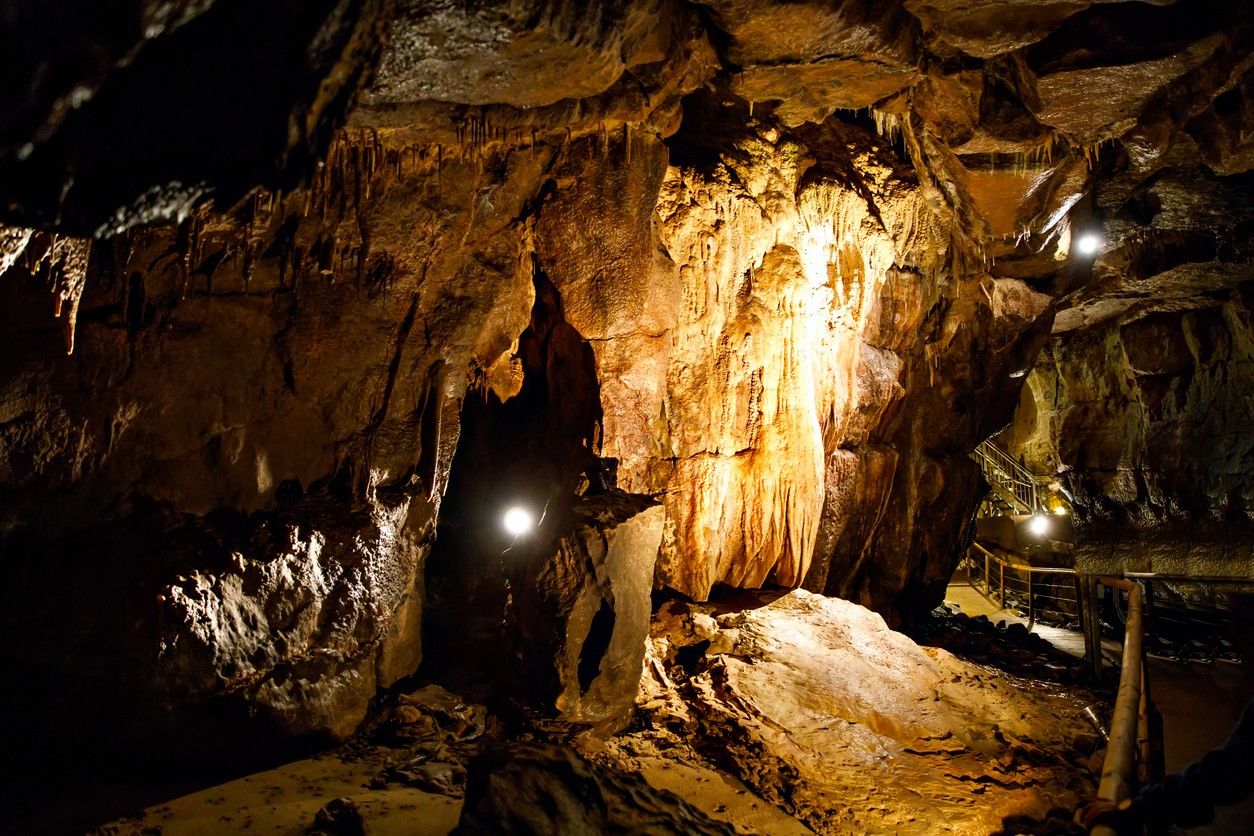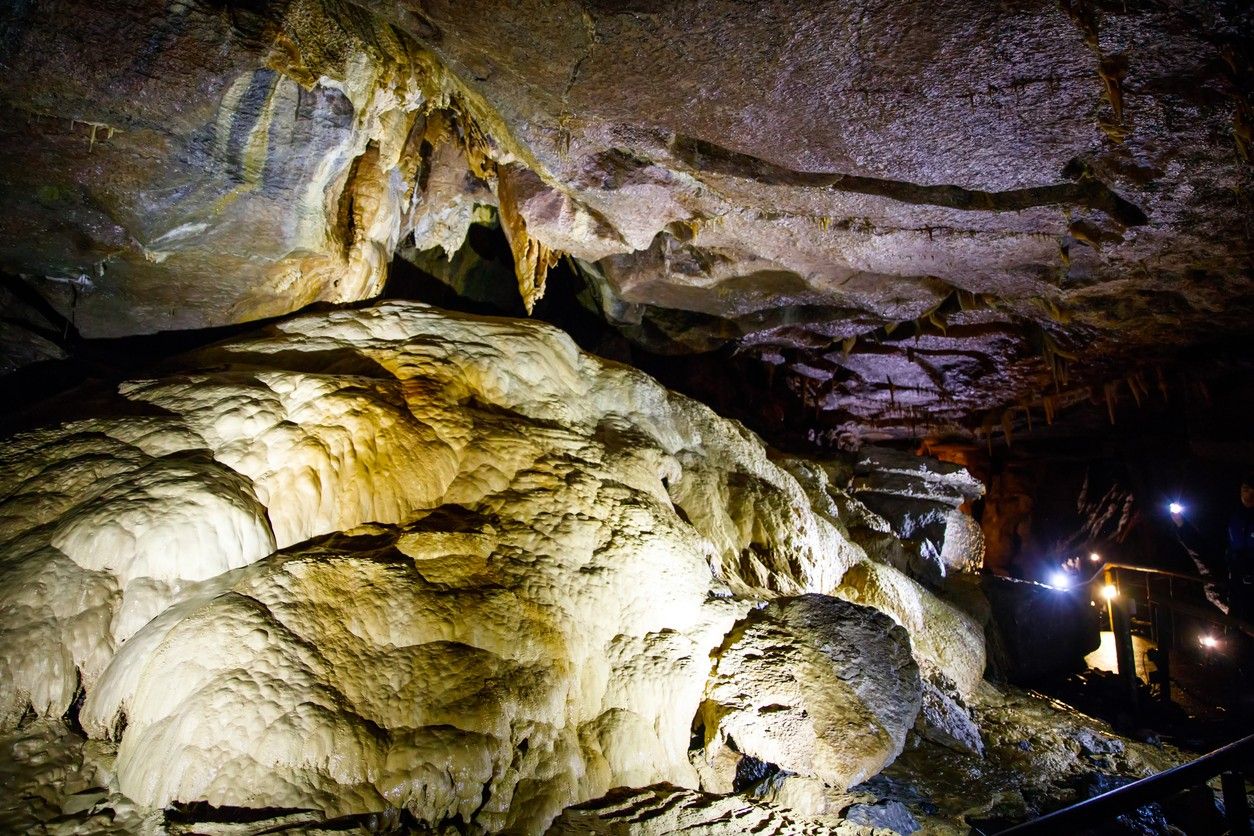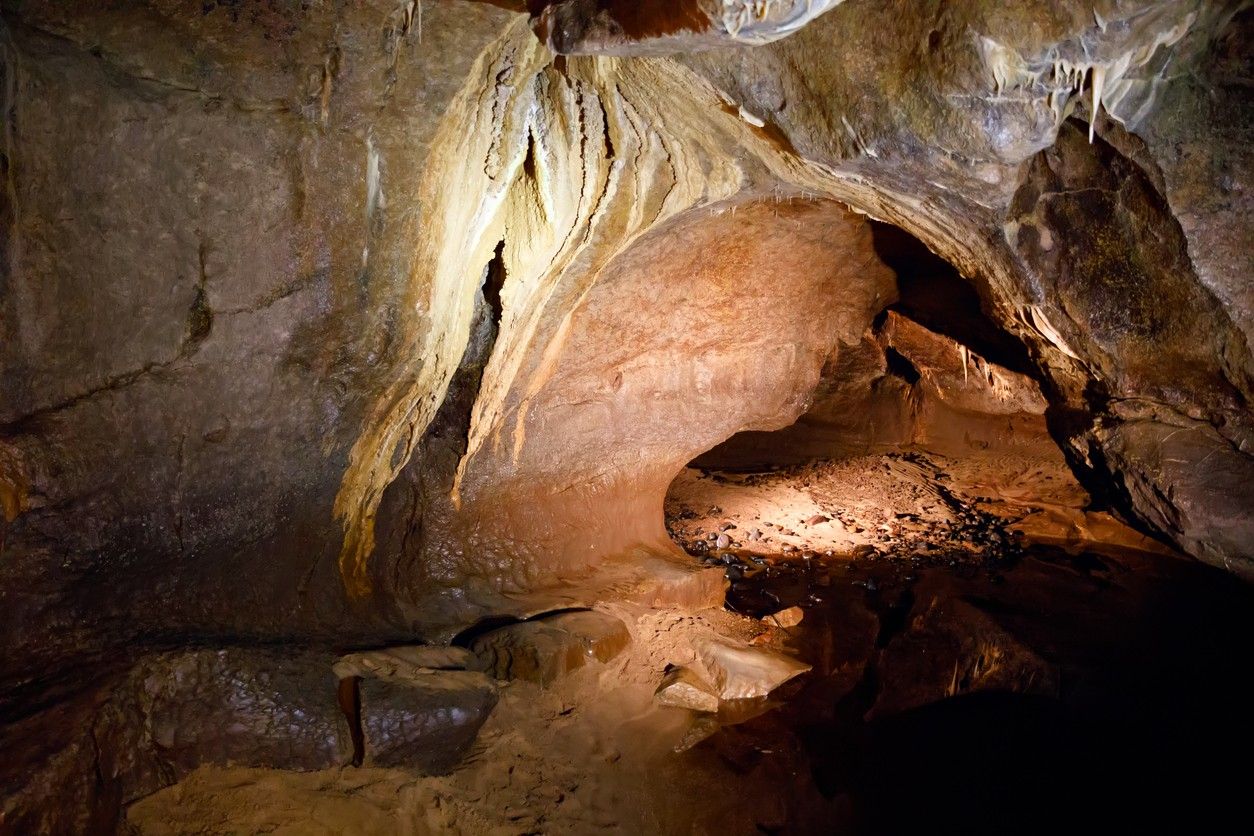Marble Arch Caves
The Marble Arch Caves are a remarkable natural wonder located in County Fermanagh, Northern Ireland. This extensive cave system, formed over millions of years by the erosive power of water, offers visitors a unique opportunity to explore the hidden depths of the Earth. The caves are situated within the Marble Arch Caves Global Geopark, an area recognised by UNESCO for its exceptional geological heritage. The Marble Arch Caves have become a popular tourist attraction, drawing visitors from around the world who are eager to witness the awe-inspiring beauty of this subterranean realm.
The Formation of the Marble Arch Caves
The Marble Arch Caves are a remarkable testament to the power of nature and the complex geological processes that have shaped our planet over millions of years. The formation of these caves is a story that began over 330 million years ago, during the Carboniferous period, when the area that is now County Fermanagh was covered by a warm, shallow sea. Over time, the remains of countless marine organisms accumulated on the seafloor, forming layers of limestone rock. As the millennia passed, the limestone was gradually uplifted and exposed to the elements. Rainwater, which is slightly acidic due to dissolved carbon dioxide, began to seep through cracks and fissures in the rock, slowly dissolving the limestone and creating a network of underground channels and cavities. This process, known as karst weathering, is the key to the formation of the Marble Arch Caves and other similar cave systems around the world.
The dissolution of the limestone was not a uniform process, however. The presence of other types of rock, such as sandstone and mudstone, created barriers and obstacles that influenced the flow of water through the rock. These less soluble rocks played a crucial role in shaping the unique features of the Marble Arch Caves, such as the towering chambers, winding passageways, and intricate calcite formations. One of the most striking features of the Marble Arch Caves is the presence of subterranean rivers and streams. These waterways are the lifeblood of the cave system, continuously shaping and enlarging the caverns and passageways through a process known as mechanical erosion. As water flows through the caves, it carries with it sand, gravel, and other abrasive materials that gradually wear away the limestone, creating new channels and expanding existing ones.
The formation of the Marble Arch Caves has also been influenced by chemical precipitation. As water percolates through the limestone, it becomes saturated with dissolved calcium carbonate. When this mineral-rich water enters the air-filled caverns, the calcium carbonate begins to precipitate out of the solution, forming the stunning stalactites, stalagmites, and other calcite formations that adorn the caves. The formation of these calcite formations is a slow and delicate process that requires specific environmental conditions. Factors such as temperature, humidity, and the rate of water flow all play a role in determining the shape, size, and colour of the formations. Some of the most impressive calcite features in the Marble Arch Caves include the delicate curtains of stalactites that hang from the ceiling, the towering columns of stalagmites that rise from the floor, and the shimmering calcite pools that reflect the light like mirrors. The Marble Arch Caves are not a static environment, however. The geological processes that formed the caves are still active today, continuously shaping and changing the underground landscape. The flow of water through the caves, the growth of calcite formations, and the occasional collapse of rock all contribute to the dynamic nature of this subterranean world.
The Discovery and Exploration of the Marble Arch Caves
The Marble Arch Caves have a rich and fascinating history of discovery and exploration that spans over a century. The story begins in 1895, when two intrepid explorers, Édouard-Alfred Martel and Lyster Jameson, first ventured into the unknown depths of the caves. Martel, a French speleologist who is widely regarded as the father of modern cave exploration, had heard rumours of a vast underground network of caverns and streams in County Fermanagh, and he was determined to investigate. Together with Jameson, a scientist from Dublin, Martel embarked on a pioneering expedition to explore the Marble Arch Caves. Armed with little more than candles, ropes, and a small boat, the two men made their way through the narrow passages and towering caverns of the cave system, marvelling at the stunning calcite formations and subterranean waterways that they encountered along the way. Martel and Jameson's expedition was a groundbreaking achievement in the field of speleology, and their discoveries laid the foundation for future exploration of the Marble Arch Caves. However, it would be several decades before the full extent of the cave system was revealed.
In the years that followed, various groups and individuals continued to explore and map the Marble Arch Caves, gradually piecing together a more complete picture of this subterranean wonderland. One of the most significant discoveries was made in 1935 by a group of cavers led by Jack Crabbe, who stumbled upon a massive chamber that they named the Grand Gallery. This awe-inspiring cavern, which measures over 30 meters in height and 90 meters in length, is one of the largest cave chambers in the British Isles and is a highlight of any visit to the Marble Arch Caves. As exploration of the caves continued throughout the 20th century, discoveries were made and new passages were mapped. In the 1970s, a team of cavers led by Rupert Skorupka made a significant breakthrough when they discovered a connection between the Marble Arch Caves and the nearby Prod's Pot cave system. This discovery revealed that the Marble Arch Caves were part of a much larger underground network that extended for miles beneath the hills and valleys of County Fermanagh.
Today, the Marble Arch Caves are a popular tourist attraction that draws visitors from around the world. Guided tours of the caves offer a fascinating glimpse into this hidden world, with experienced guides leading visitors through the winding passages and cavernous chambers of the cave system. Along the way, visitors can marvel at the stunning calcite formations, including delicate stalactites, towering stalagmites, and shimmering calcite pools. But the Marble Arch Caves are not just a tourist attraction – they are also an important site for scientific research and exploration. The caves are home to a unique and fragile ecosystem that includes rare species of bats, cave spiders, and other subterranean creatures. Scientists and speleologists continue to study the caves, using advanced mapping and monitoring techniques to better understand the complex geological and biological processes that shape this underground world.
The Marble Arch Caves Global Geopark
The Marble Arch Caves are situated within the Marble Arch Caves Global Geopark, a UNESCO-recognised area that spans over 18,000 hectares across County Fermanagh and County Cavan in the Republic of Ireland. The Geopark is home to a wide range of geological features, including caves, karst landscapes, and fossil-rich limestone.
Geological Significance
The Marble Arch Caves and the surrounding Global Geopark are of immense geological significance, offering a unique window into the Earth's past and the complex processes that have shaped our planet over millions of years. The caves themselves are formed primarily in limestone, a sedimentary rock that was deposited during the Carboniferous period, approximately 330 million years ago. At that time, the area that is now County Fermanagh was covered by a warm, shallow sea, teeming with marine life. The remains of countless organisms, including corals, brachiopods, and crinoids, accumulated on the seafloor, gradually forming layers of limestone rock. Over time, the limestone was uplifted and exposed to the elements, setting the stage for the formation of the Marble Arch Caves. As rainwater seeped through the cracks and fissures in the rock, it slowly dissolved the limestone, creating a network of underground channels, caverns, and passageways. This process, known as karst weathering, is responsible for the creation of the caves and the unique geological features found within them, such as stalactites, stalagmites, and calcite formations. However, the geological significance of the Marble Arch Caves extends far beyond the caves themselves. The surrounding Global Geopark is home to a wide range of geological features and landscapes, each with its own story to tell. For example, the nearby Cuilcagh Mountain is formed from layers of sandstone and shale that were deposited during the Carboniferous period, providing a contrast to the limestone of the caves. The mountain is also home to a unique geological feature known as a "karst window," where a collapsed cave system has created a natural opening in the rock, exposing the underground rivers and streams.
Another important geological site within the Geopark is the Cladagh Glen, a scenic valley that is home to many important fossil localities. The limestone rocks of the glen contain a rich assemblage of marine fossils, including corals, brachiopods, and crinoids, which provide a fascinating glimpse into the ancient ecosystems that once thrived in this area. These fossils are not only of scientific importance but also offer a tangible connection to the distant past, allowing visitors to the Geopark to imagine the world as it was millions of years ago. The geological significance of the Marble Arch Caves and the surrounding Geopark is not limited to the past, however. The caves and karst landscapes of the area are also important for understanding current geological processes and how human activities can impact the natural environment. For example, the study of water flow through the caves can provide insights into the movement of groundwater and the potential impacts of pollution and land use changes on the wider ecosystem.
Other Attractions within the Geopark
In addition to the Marble Arch Caves, the Geopark offers a range of other attractions and activities for visitors to enjoy. These include:
The Cuilcagh Boardwalk Trail — A 7.5-kilometre walking trail that leads to the summit of Cuilcagh Mountain, offering stunning views of the surrounding landscape.
The Cladagh Glen — A scenic walking trail that follows the Cladagh River through a wooded glen, passing by waterfalls and fossil-rich limestone outcrops.
The Florencecourt House — A historic 18th-century mansion set in beautiful parkland, offering guided tours and a range of outdoor activities.
The Geopark Visitor Centre — Located in the village of Blacklion, the Visitor Centre provides information about the Geopark's geology, history, and culture, as well as a range of interactive exhibits and displays.
The Importance of Conservation
The Marble Arch Caves and the surrounding Global Geopark are not only important geological and tourist attractions but also play a vital role in conservation and environmental protection. The caves and karst landscapes of the area are home to a unique and fragile ecosystem that is highly sensitive to human activities and environmental changes. As such, the conservation and protection of these natural wonders is of utmost importance. One of the key conservation challenges facing the Marble Arch Caves is the protection of the delicate cave environment itself. The caves are home to a variety of specialised species, including rare bats, cave spiders, and other invertebrates that are adapted to life in the dark, damp conditions of the underground world. These species are highly sensitive to changes in their environment, such as alterations in temperature, humidity, or water quality, and can be easily disturbed by human activities such as tourism or mining. To address these challenges, the Marble Arch Caves Global Geopark has implemented a range of conservation measures aimed at protecting the cave environment and its inhabitants. These include strict limits on the number of visitors allowed into the caves at any one time, the use of designated walkways and viewing areas to minimise damage to the cave formations, and the careful monitoring of environmental conditions within the caves to detect any changes or potential threats.
But the conservation efforts of the Geopark extend far beyond the caves themselves. The karst landscapes of the area, with their underground rivers, sinkholes, and springs, are also highly sensitive to human activities and environmental changes. The Geopark works closely with local landowners, farmers, and communities to promote sustainable land use practices that minimise the impact on the karst environment, such as reducing the use of pesticides and fertilisers, protecting natural vegetation, and preventing soil erosion. Another important aspect of conservation in the Geopark is education and outreach. The Marble Arch Caves Visitor Centre plays a vital role in educating visitors about the importance of conservation and the unique ecology of the caves and karst landscapes. Through guided tours, exhibits, and educational programs, the Visitor Centre helps to raise awareness of the fragility of the natural environment and the need for responsible stewardship. The conservation efforts of the Marble Arch Caves Global Geopark are not only important for protecting the natural wonders of the area but also for supporting the local economy and communities. The Geopark is an important source of tourism revenue for the region, attracting visitors from around the world who come to marvel at the beauty and geological significance of the caves and karst landscapes. By protecting and preserving these natural assets, the Geopark helps to ensure the long-term sustainability of the local economy and the well-being of the communities that depend on it.
Protecting the Cave Environment
The Marble Arch Caves are a delicate and sensitive environment that requires careful management and protection. The caves are home to a variety of unique species, including bats, cave spiders, and rare cave-dwelling invertebrates. These species are adapted to the dark, damp conditions of the caves and are highly sensitive to changes in their environment.
To protect the cave environment, the Marble Arch Caves Visitor Centre has implemented a range of conservation measures. These include:
Limiting the number of visitors to the caves to reduce the impact of human activity on the cave environment.
Installing boardwalks and barriers to prevent visitors from damaging the cave formations or disturbing the cave fauna.
Monitoring the cave environment regularly to detect any changes or potential threats to the ecosystem.
Educating visitors about the importance of cave conservation and the need to respect the cave environment
Preserving the Karst Landscape
The karst landscape of the Marble Arch Caves Global Geopark is also an important area for conservation. Karst landscapes are characterised by distinctive features such as sinkholes, underground rivers, and caves, which are formed by the dissolution of soluble rocks such as limestone. These landscapes are highly sensitive to human activities such as quarrying, agriculture, and development, which can disrupt the delicate balance of the ecosystem.
To preserve the karst landscape, the Geopark has implemented a range of conservation measures, including:
Working with local landowners and farmers to promote sustainable land management practices that minimise the impact on the karst environment.
Monitoring the water quality of the underground rivers and streams to detect any potential sources of pollution or contamination.
Promoting the use of renewable energy and sustainable tourism practices to reduce the carbon footprint of the Geopark.
Engaging with local communities and stakeholders to raise awareness of the importance of karst conservation and the benefits of sustainable development.
Visiting the Marble Arch Caves
Guided Tours — The best way to experience the Marble Arch Caves is through a guided tour. The Marble Arch Caves Visitor Centre offers a range of tour options to suit different interests and abilities. The most popular tour is the Marble Arch Caves Tour, which takes visitors on a 1.5-kilometre journey through the caves. The tour lasts approximately 75 minutes and includes a boat ride along an underground river, as well as a walk through the cave's impressive chambers and passages.
For those seeking a more adventurous experience, the Marble Arch Caves also offer a Caving Adventure Tour. This tour takes visitors off the beaten path and into the less-explored areas of the caves. Participants are provided with helmets, lights, and other necessary equipment, and are guided by experienced cavers through a challenging and exciting route.
Accessibility — The Marble Arch Caves are accessible to a wide range of visitors, including families with children and individuals with limited mobility. The Visitor Centre is fully wheelchair accessible, and the Marble Arch Caves Tour includes a wheelchair-accessible section. However, due to the nature of the cave environment, some areas of the tour may not be suitable for those with mobility issues. It is recommended that visitors contact the Visitor Centre in advance to discuss their specific needs and requirements.
Ticket Information — Marble Arch Caves tickets can be purchased online or at the Visitor Centre. It is recommended that visitors book their tickets in advance, especially during peak season, to avoid disappointment. The Marble Arch Caves Tour costs £10 for adults and £6 for children (aged 5-16). Family tickets and group discounts are also available. The Caving Adventure Tour costs £30 per person and is suitable for adults and children aged 14 and above.
Related Articles

Let us know you agree to cookies
We use marketing, analytical and functional cookies as well as similar technologies to give you the best experience. Third parties, including social media platforms, often place tracking cookies on our site to show you personalised adverts outside of our website.
We store your cookie preferences for two years and you can edit your preferences via ‘manage cookies’ or through the cookie policy at the bottom of every page. For more information, please see our cookie policy.
